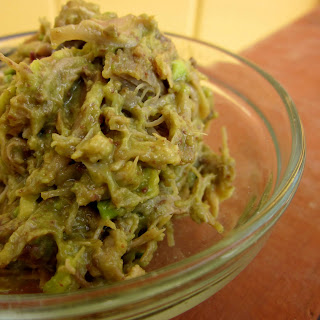I love how going through the introduction diet gives you a new appreciation for foods that you never really enjoyed before. This goes for the kids too. My anti tomato kid, eats them easily now. My oldest two hated winter squash in any form, now they eat it on a daily basis. I never thought too highly of cauliflower, now I buy 3 heads each week. In the beginning, the limits were confining and my creativity was stifled by it, but now I look back and see how much good it did for our relationship with food. Once our bodies regulated our constant need for sugar and starch to fill us up, we were able to find complete satisfaction in these highly nourishing, healing foods.
Although the first stage is known as "just soups" there is actually a lot of variety right off the bat. A huge assortment of meats to choose from with ten different veggies mixes and matches in to quite a few options. Then, slowly you begin to add in small amounts of new things, one at a time. We have been transitioning out of the intro for three weeks now, and have not even scratched the surface of all the things we are allowed to have on the Full GAPS diet because we still have to add things slowly to check for reactions and become accustomed to foods that are harder to digest than soup and eggs. Our ingredients are adding up and we tend to feel like we are no longer on a special diet.
A soup that has always been a family favorite for years is tortilla soup. Although I am making it differently now, it still has the same flavor from our memories. Taking out the corn chips and millet (GAPS illegals) and adding lots of chicken, olive oil and sour cream makes for a tasty, filling, meal. When I first went back to this recipe it ended up being chicken, carrots, onions, zucchini and garlic simmered in chicken broth with a small spoon of sour cream (stage 1). In stage 2, I added an egg yolk, cilantro and larger spoons of sour cream. Stage 3, I got to include avocado and we had worked up to around 1/3 cup sour cream. Stage 4, I added peppers (not sure what stage these become legal, but after I was confident Number 1 was not allergic by this time, I was happy to add them in because they add so much flavor. Speaking of flavor, the homemade broth MAKES this soup!
I tended to make double or triple batches so it would last a few meals.
6-8 cups chicken stock/broth
6 carrots, chopped (stage 1)
2 zucchinis, chopped (stage 1)
1 large onion, chopped (stage 1)
5 roma tomatoes, diced (stage 2)
2 red bell peppers, chopped (stage 4?)
1 small jalapeno (full GAPS)
2 cups boiled chicken (stage 1)
3 garlic cloves (Stage 1)
2 teaspoons ground cumin (full GAPS)
2 green onions, sliced (stage 5)
½ cup cilantro, chopped (stage 2)
Juice of 1 lime (full GAPS)
Salt and pepper to taste (stage 1)
1/4 cup beef tallow (stage 1) ghee (stage 2) coconut oil (stage 4)
1 egg yolk per bowl (stage 2)
1 avocado, diced (stage 3)
GAPS legal cheese like colby (full GAPS)
homemade sour cream
Skip the ingredients listed that are past your current stage.
Boil carrots, zucchini, onions, peppers and tomatoes in broth until tender. Add chicken, garlic and cumin, cook 1 more minute. Mix in green onions, cilantro, lime juice, fat, salt and pepper to taste. Crack one egg yolk per bowl and whisk warm soup into it. Garnish with avocado, cheese and sour cream.



























